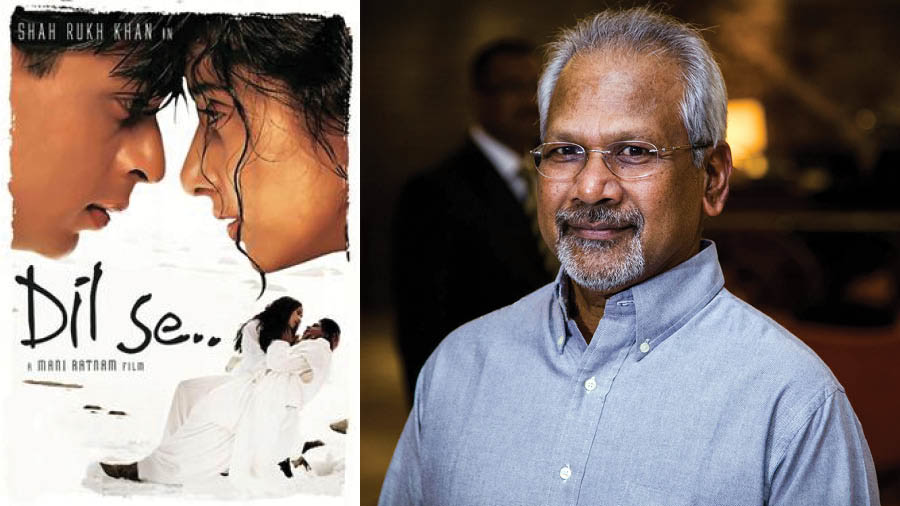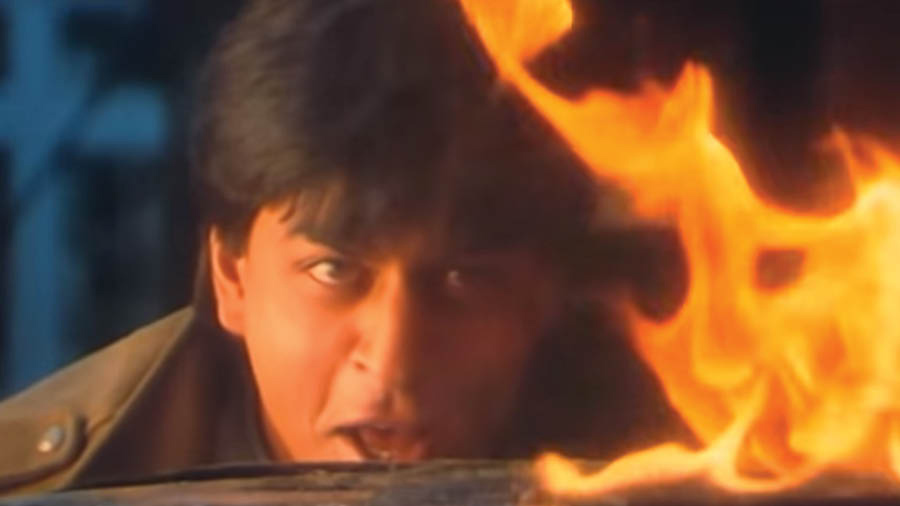I was in high school, in Kolkata, when Mani Ratnam’s Dil Se hit the silver screens on August 21, 1998. By then, I was already an admirer of Mani Ratnam’s craft, having watched Mouna Ragam, Nayakan, Anjali, Roja, Bombay and Iruvar – some on the big screen, some on television; some in dubbed Hindi formats and some in original Tamil versions with English sub-titles, when they would air on national TV for the Sunday slot for award-winning regional movies. The Kolkata film festival at Nandan used to be another venue to watch such movies. I remember the thrill of getting transported into the celebration of culture and aesthetics of another region of India, with a theatre full of Bengali-speaking audience at Nandan. Those were fascinating times to be in Kolkata and explore creative art forms from all corners of the country.
The era and the epic

‘Dil Se’ was Mani Ratnam’s first original Hindi movie
Life in Kolkata in the late 1990s was mostly ‘offline’, without any major proliferation of digital tools. Dil Se was Mani Ratnam’s first original Hindi movie and made my life easier – I just had to take the short walk from my high school – St. Xavier’s on Park Street to Jamuna cinema (no longer in business) located off the erstwhile Free School Street – to watch it. I did not have to wait for the film festivals to screen it, subtitled DVDs to arrive at local shops or national TV to air it.
Mani Ratnam, especially in those days, was among those filmmakers who would let their cinema do the ‘talking’, and there was no media hype or sneak peeks into the storyline before the theatrical release. There would always be a surprise factor associated with a Mani Ratnam movie, and Dil Se was no exception. While watching Dil Se for the first time at Jamuna cinema, I was mesmerised by the poignant tale of love in troubled times depicted with stunning brilliance by Mani Ratnam and his stellar crew. But I could also tell the reaction from the audience was mixed – some were visibly stunned, some appeared to be processing the abstract nature of the narrative, while some were not yet ready to be blown away (pun unintended) with an atypical climax and the profoundness of the underlying layers of unrequited love – both literally, between the protagonists, and figuratively, between a nation and her people, including those who have been living on the edges – geographic or otherwise.
The metaphors, the music, the magic

‘Dil Se’ simmers with visual and lyrical metaphors, right from its opening sequence at the rainy, sleepy Haflong railway station to its climax sequences near the bustling capital of New Delhi
When I look back at Dil Se, the 25 years in between, and where we stand as a nation and a generation today, I think there were at least two magical qualities about the movie and its making that eventually transformed it into a timeless classic.
Firstly, I find Dil Se to be simmering with visual and lyrical metaphors right from its opening sequence at the rainy, sleepy Haflong railway station in the north-eastern corner of India to its climax sequences near the bustling national capital of New Delhi. Dil Se is poetry on celluloid for the most part, especially the romantic encounters between the two lead characters, Amar, played by a refreshingly restrained Shah Rukh Khan and Meghna (or Moina), played by Manisha Koirala, who conveyed the angst of a tormented, tortured soul mostly through her eyes.
The subtle layers of Dil Se in the narrative, the frames, and the dialogues have been decoded over the years by several prominent film critics, authors, and social media enthusiasts. Much like Amar’s quest from the heart of the country to its north-eastern corner to understand what 50th year of Independence meant for the people of India, the film represented an inherent aspirational cry of a new age India eager to connect with those who had persistently fallen off the mainstream discourse – in our social, cultural, and political landscape.
One of Rahman’s most complete albums
And then, there was the music – songs and the background score. A. R. Rahman and Gulzar collaborated for the first time in Dil Se and the rest is history. Dil Se would easily be one of A. R. Rahman’s most complete albums to date. Chaiyya Chaiyya – rated by BBC World Service as one of the 10 most popular songs of all time – was profound and peppy at the same time with Sukhwinder Singh at his peak form. Lata Mangeshkar’s first single with A. R. Rahman, Jiya Jale portrayed Rahman’s flair in fusion – with Malayalam lyrics and chorus adding a luring charm to the composition. The soulful Ae Ajnabi by Udit Narayan and Mahalaxmi Iyer blended Assamese folk forms with classical notes. Satrangi Re had the vibrance of seven shades of love – derived from Arabic literature – rendered masterfully by Kavita Krishnamurthy and Sonu Nigam. And then there was the title track – Dil Se Re – my personal favorite of all time, defining the essence of this heart-felt saga. Rahman set new benchmarks in orchestration with Dil Se Re while Gulzar complemented with timeless verses – ‘dil to akhir dil hai na.. meethi si mushkil hai na..’.
In 2006, I moved from Kolkata to Assam for my first job and as luck would have it, Haflong was one of the towns in my jurisdiction. My subsequent visits to the always-rainy Haflong and its lonely railway station would have mystical vibes to them reminding me of Amar and Meghna and their quest for togetherness. In 2023, further away in time and space now, living in yet another rainy city – Seattle, as I reflect on their story, I wonder if Amar and Meghna would find their corner in India any different – any less tumultuous – than what they did two-and-a-half decades ago. I hope they do. And may they live happily ever after under the pristine and peaceful “ishq ki chhaon...”.
Dr. Ananda Sankar Bandyopadhyay is a global expert in infectious disease epidemiology and vaccinology. He has written peer-reviewed articles, book chapters and perspectives in leading journals, newspapers, and media portals across the world. You can reach him on Twitter: @anandaonline

